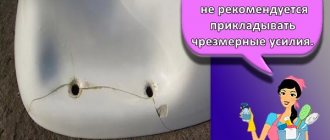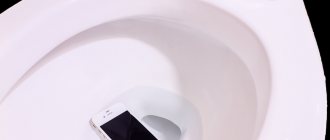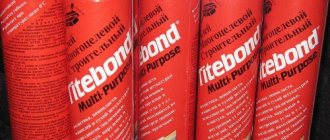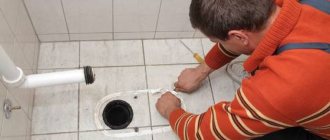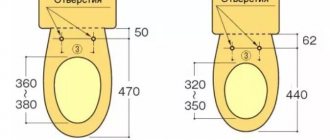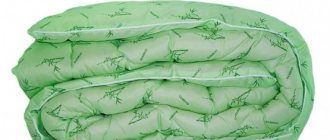Flushable cat litter
join the discussion
Share with your friends
In modern pet stores you can find a lot of cat litter, but those that can be flushed down the toilet are especially popular. In our article we will talk about the main types of such filler and their features.
How to choose a filler
The cat litter is no less important than the litter box itself. It allows you not only to absorb urine odors, but also to hold it securely, which means that the cat will not wet its paws and will not spread a specific “aroma” throughout the apartment.
When choosing this product, you should pay attention to the following points.
- Level of absorption of waste products of a pet. The frequency of changing the filler also depends on this factor.
- Material. The safest and most environmentally friendly are wood and paper fillers, which do not cause allergies in either animals or humans.
- Texture of the material. The filler granules should be carefully examined to ensure they do not contain dust or material impurities. All this can settle on the cat’s paws and fur, which, in turn, will spread dirt across the furniture and floor.
- Flavors and additives. It is best to exclude litters with the addition of various odors, as cats do not always like them.
- Method of storage and disposal. The most suitable in this regard is a soluble filler, which is easily flushed down the toilet. But this method is not suitable for every type.
- Number and age of animals in the house. It is this factor that determines not only the volume of products purchased, but also its type. For example, the silica gel type is absolutely not suitable for small kittens, since it comes in small granules that the animal can eat. And this, in turn, has a detrimental effect on his health.
Catsan brand
Catsan is a brand of the large American company Mars Incorporated, which has existed for more than 100 years. However, it began producing pet products relatively recently. Mars Incorporated has factories and representative offices in 50 countries. The main products produced are chocolate, chewing gum and pet products. Premium pet food began to be produced more than 50 years ago, but cat litter began more than 20 years ago. The Belgian subsidiary Mars Petcare (headquartered in Brussels) is responsible for the development of formulas and production of pet products.
Katsan produces a whole line of products for kittens
Pet products from this manufacturer include more than 40 brands. Some of them are worldwide popular (Pedigree, Whiskas, Royal Canin, Chappi, Catsan, etc.).
The company produces many world-famous animal products
The company produces fillers from unique granules. The formula of the raw material is registered as Extra Mineral Protection. The granules contain natural ingredients:
- special chalk;
- quartz sand;
- mineral supplements, etc.
Asbestos and synthetic bleaches are not added to the filler. The bactericidal and odor-blocking properties of the product are provided by its main components.
Types and features
The main types of fillers flushed down the toilet:
The wood type is the most popular due to its low price and easy disposal. It is compressed sawdust that swells when in contact with moisture and forms lumps. As a rule, such sawdust is medium in size and fits into a tray of any size.
Main advantages.
- Safe material that does not cause allergies. The exception is low quality products from unknown manufacturers. This litter may contain large chips and poorly processed material, which can scratch your cat's paw.
- Economical. When these granules get wet when in contact with moisture, they expand, so a thin layer in the tray is sufficient. Due to this, the packaging lasts for a long time.
- Ease of disposal . This type, unlike many others, can be disposed of in the toilet. But it is worth remembering that you cannot wash off all the filler at one time. Otherwise, it may lead to a clogged drain.
- Versatility . Suitable for both adult cats and kittens. Often, small kittens love to chew on the litter, and since the material is safe and environmentally friendly, they will not be able to harm themselves with it.
The disadvantages of such products include the following.
- Poor absorption of odors. If you don’t change the filler for a long time, then soon the whole apartment will be filled with an unpleasant odor.
- It absorbs moisture worse than other types, so it requires more frequent changes.
- It is easily scattered around the tray, so the animal can spread it around the apartment. It is better to choose a tray with a mesh or high sides.
The next most popular is paper filler. Buyers are also attracted to it by its easy disposal into the toilet without the possibility of clogging and the environmentally friendly material. Unfortunately, it is difficult to find such a filler on the domestic market.
The highest quality paper fillers are made in Japan, which can be ordered online. The main disadvantage of this type is the too high price.
The plant filler is also easy to dispose of into the sewer system without harming the pipes. The natural origin of the products is another plus, since there is no risk of an allergic reaction. The main disadvantage is poor absorption of moisture and odor. Therefore, this filler should be changed several times a day.
And also plant products, for example, corn, are light in weight, which allows them to be easily distributed throughout the apartment. In this case, you should choose a toilet with a mesh.
A special type of plant product is a filler based on soy fiber. It retains odor and moisture well, so it does not require frequent changes. It also doesn't spread out of the tray so easily. But these products are much more expensive.
Next, watch a video review of the Molly Coddle filler.
Answers from experts
Here they write that you can take small portions kstatida /a/5392/vybiraem-napolnitel-dlya-koshachego-tualeta
But look for yourself, if it soaks well and doesn’t float on the surface, then you can do it a little, not all at once.
It’s not worth it if you don’t want everything to pour back out with the accompanying impurities.
I buy Forest Freshness - it says it’s possible and I’ve been doing it successfully for many years - I have a cat and a pig..
We only washed off what had already crumbled from the granules.
And little by little they washed it off with the poop too.
One day my husband, without me, just started spluttering into the toilet, and the neighbor downstairs got all clogged... It didn’t swell immediately, but in the process...
You can, it’s even indicated on the packaging.
I didn’t bother about this, what’s so difficult to throw out with the trash?
You can: » Wood fillers (pressed pellets) are good because a) they are not very expensive, b) they do a good job of masking the smell of cat waste with the aroma of wet sawdust (not for everyone, of course, but generally not bad). However, there is a downside - small particles of filler cling to cat fur and successfully spread throughout the apartment. Plus, the manufacturer claims that this filler can be flushed down the toilet. If you wash it off in small portions, then it really is possible - no blockages appear. »
We don't have a cat, but a rabbit. We pour special pressed sawdust into her toilet (she does all her business in the corner, she also has a tray, like cats); they cost from 30 to 70 rubles per bag, produced in Russia, sold in pet stores. They look like granules. They absorb moisture well; when absorbed, they disintegrate into dust. They can be flushed down the toilet. They absorb unpleasant odors, so the cage does not smell, I remember I saw on some packaging that it was written that it can also be used in the toilet for cats.
What is silica gel
Silicone filler is a hydrophilic sorbent. It feels hard to the touch. It is obtained by combining silicon with water in the process of colloidal mixing.
Due to its composition and manufacturing process, silica gel takes the form of small granules, balls, and crystals. The surface of the crystals has a porous texture, due to which they have a high water absorption rate.
Due to its absorbent properties, silica gel is used not only as a litter for cat litter boxes. It is placed in white bags that are found in boxes with shoes or things.
When purchasing, you should not be surprised that the color of the granules may differ from each other. Different colors are responsible only for the decorative component of the filler. The size of crystals and balls can vary.
Advantages
Any material has strengths and weaknesses.
Benefits of silica gel:
- High absorbency. This is where silica gel is better than other materials used to make fillers.
- The ability to effectively eliminate unpleasant odors.
- Synthetic crystals cannot grow mold.
- Silica gel is not subject to burning, rotting and destruction under the influence of environmental factors.
- Economical. Multi-colored balls and crystals are much more economical than wood or mineral litter for cats. It needs to be changed 2–4 times a month.
- The tray is easy to clean from silica gel granules. The tray can be cleaned in 1–2 minutes.
Due to the fact that silica gel has a large number of advantages and absorbs moisture well, you can find many positive reviews from cat owners on the Internet.
Best answers
I (and my cats) are satisfied with the wood clumping product Cats Best Eko Plus .zoomaz /products/1436 Of all the ones I’ve tried, this is the best. Very economical, you don’t have to change the tray for a long time, the lumps don’t fall apart, it holds the smell, you can THROW OUT INTO THE SEWER. I really don’t use the last advantage; I have trays in the hallway. I just scoop up the clumps and poop into lunch bags and throw them away. And everything is assembled normally with a scoop) ) As for the trays, I have separate ones. For peeing there is a large one with sides, for serious tasks there is a little tray, I don’t know how much the filter helps, it doesn’t seem to stink even without the door. Filler under the grate is not my option; my youngest is a big fan of burying things.
We have some kind of sawdust filler, you can throw it in the toilet, it is washed off
It’s better not to use filler at all, it will only cause more problems and fuss, use a regular patch with a grid, it’s simple and convenient to wash))
We have no filler at all.
if it goes on a tray with a grid, this is the best option, no filler is needed, you can rinse it right away, no problem. I use the regular one (Bars, Comfort), although I add very little of it, I just rinse it off immediately after using the toilet. I flush it directly into the toilet, the cat is 14 years old, no problems.
People who have a lot of cats gave me a piece of hair; apparently, it was trained to defecate on the newspaper. She commented on all the articles in my newspapers! But still, as much as I communicate with cats, they themselves choose: some toilet, some sink, and most like compressed sawdust. It's not expensive for me, and it can be flushed down the toilet.
I think you're worrying too much. Everything is set up for you, and the tray and litter are suitable for the cat, what don’t suit you? Where else can you throw cat poop? Naturally, into the garbage chute or trash can. You are inventing a problem for yourself. I use silica gel filler, there is no smell, I throw it in the trash.
Big cat matters can be thrown into the toilet, especially if you take it with a napkin, then the amount of filler that gets into the toilet is very small, nothing bad will happen)
Our tray is large, but ordinary, without bars or anything else. In my opinion, the house is some kind of nonsense, it just takes up space, although we didn’t have any, so maybe I just don’t know about its charms. We use Cat best wood filler, I think it’s called, for the entire time that we had cats, for our look is the most comfortable. It can be flushed down the toilet, it does not smell, does not spread throughout the apartment, and absorbs well. It’s not very cheap, really, but we buy it online in large packages, and it turns out fine.
The combination of convenience and economy is wood filler. You can use heating pellets, then it turns out very cheap - 3-6 rubles per kg.
Filler "Katsan"
The filler manufacturer Catsan does not pursue quantity and variety. Owners of pet cats are offered three options for this brand of litter:
- absorbent hygienic filler (Catsan hygiene plus);
- clumping filler (Catsan ultra plus);
- litter for kittens.
Regardless of the product series, the filler granules are light in color (from white to gray).
Absorbent hygienic filler
Catsan hygiene plus is an absorbent litter for cats of any breed. It is sold in blue packages with a blue stripe on the left. The strip depicts an adult white cat. Packaging design may vary slightly depending on which branch produces the product.
Katsan absorbent filler is sold in blue bags with a blue and white pattern.
The manufacturer promises that the filler will tightly retain the odor. Treated raw materials guarantee the prevention of bacterial growth. In order for the product to “work”, you must follow the recommendations for use. The layer of filler should not be less than 5 cm. Only in this way will the moisture be completely absorbed, and the main amount of filler can not be changed for 7 days. However, solid waste will need to be removed within a week. It is not necessary to replace the damp part.
The animal should not be allowed to swallow the litter granules. It is also not recommended to flush used particles down the toilet.
When completely replacing the filler weekly, you need to thoroughly wash the tray with running water. If your apartment has a “warm” floor, then something should be placed between it and the tray. To do this, you can purchase a special stand or use improvised means. The tray should not get hot. Otherwise, the liquid vapor will evaporate, and there will be an unpleasant toilet smell in the air.
When I completely change the litter, I first wash the tray with cold water using a brush (this removes the smell). Then I rinse it with hot water. Then I soap the bottom of the tray with laundry soap and rinse again with cold water. Even if the tray has managed to warm up and has not been changed for several days, there will still be no smell. And after washing, I dry the tray with a paper napkin. This way the tray smells nice, and the cat can still lie there after replacing it.
Absorbent filler "Katsan" is offered in packages of different volumes (2.5 l, 5 l and 10 l). New packages are equipped with convenient reusable Velcro. Some cat breeders who bought Catsan for the first time tear off the edge of the bag without finding the zip fastener. With Velcro everything is easier, you don’t need to cut anything.
In the upper corner of the package there is a picture of how to open the Velcro fastener.
The filler can be stored in a cool, dry place (at a temperature of no more than 30 degrees and a humidity of no more than 60%).
Clumping filler "Katsan"
Catsan ultra plus clumping litter consists of special microporous granules. Their structure is designed in such a way that when wet they stick together, forming a small lump. Such lumps can be removed after drying using a special scoop with a mesh at the bottom. So there is no need to completely change the entire filler. Each time, removing lumps or solid waste, you just need to add the missing amount of filler.
It is important that the filler is poured in an even layer (and at least 5 cm). If the granules lie in too thin a layer, then lumps will not form, as they will not have time to dry. The moisture will immediately flow to the bottom and the filler will become damp.
Katsan clumping litter is sold in beige packages with a blue and white pattern.
To prevent the smell from spreading throughout the apartment, you must remember to remove lumps daily. A complete replacement of the filler can be done every 3 weeks. Used litter should not be flushed down the toilet. Even mineral granules will not dissolve too quickly. When the filler gets wet in the sewer, it forms dense stones that can clog the system.
Katsana pellets in the toilet bowl do not dissolve with plain water, the cat must definitely receive them, then they dissolve perfectly, otherwise they just lie in the water (and they can be seen in the toilet bowl).
Nelanela
https://otzovik.com/review_2697555.html
This brand of clumping litter is sold in five-liter packages. If you do not violate the recommendations for use, then such a package may last for 2 months.
Donut (my sister's cat) goes into a low litter tray. He does his business carefully. If you do not remove the resulting lump immediately, the next lump will appear nearby. Donut doesn't bury his puddles. But my cat does the opposite. She has a high tray with a side, but she buries it so carefully every time that the lumps do not have time to stick together. Often the granules end up on the floor. I believe that female cats are more pedantic, so they need more litter.
Catsan litter for kittens
Catsan also offers litter specifically for kittens. There are clumping and absorbent ones that are suitable for little ones. You can recognize the delicate litter by the icon in the lower right corner of the package (ideal for kittens). The filler is packaged in bags of the same volume as the adult version.
There is a special mark on the packaging of kitten litter.
Kitten litter is different in that the raw materials for it are processed using complex technology. The granules are additionally cleaned, so that filler grains do not create dust. The kitten will not sneeze. In addition, Catsan is considered hypoallergenic. And the granule cleaning technique eliminates the possibility of leaving paw prints on the floor.
Is it possible to flush cat litter down the toilet: solving the disposal problem in different ways
Flushable cat litter is the dream of many owners. Indeed, it is much more convenient to simply flush the used material down the drain, rather than collecting it in bags and throwing it into the garbage chute.
However, the reality is a little different: large amounts of any cat litter getting into the pipes can cause blockages. And instead of saving energy, we will end up with a rather serious problem, the solution of which will have to spend a lot of time. To prevent such developments, you should carefully read the tips given in our article.
What to do if the filler is not washed off
If the filler is not washed off and a blockage still forms, you can quite easily get rid of it on your own. If sawdust has formed a plug in the toilet drain, then it should be removed manually, and the sooner the better: over time, sawdust absorbs more and more water, the plug becomes denser, and it will be much more difficult to get rid of it.
You can remove stuck sawdust like this:
- If you literally just tried to flush the litter and it is in the toilet, then it needs to be removed from there immediately. Put on rubber gloves (if you don't have them, wrap your hand in a regular plastic bag) and remove everything you can from the toilet.
- Then use a plunger to push the remaining sawdust further into the pipe itself. Place the plunger on the drain, press the rubber socket tightly to the surface and pump, as for regular pipe cleaning.
- You can add a little water to the toilet to help push the sawdust further. However, there should not be too much water, otherwise it will have to be bailed out.
- Drain the water from the tank. If everything is done correctly, the flow of water will drive the sawdust further down the drain and remove the remaining blockage.
If the blockage remains or the plug formed a long time ago, you will have to clean the toilet with a special cable with a nozzle. The cable should be lowered into the drain and made circular movements, trying to push it further and screw it into the blockage. It is important to punch a small hole through which the flow of water from the tank will gradually wash away the plug.
Remember that due to washed away filler, a blockage may form not in your apartment, but several floors below. In this case, all residents will have problems with the sewer system, and you are unlikely to be able to correct the situation on your own.
Sometimes the filler does not immediately clog the pipe, but gradually accumulates in the sewer, causing a slight blockage and reducing the capacity of the pipes. In this case, you should use special chemicals.
- Choose a product that is strong acid or alkaline, as these chemicals are good at eating away organic debris inside the drain. It can be liquid or powder in granules.
- Pour or sprinkle the product down the toilet drain and leave for about half an hour, waiting for the reaction to complete.
- Then flush the toilet thoroughly with plenty of water, flushing the tank several times.
Although wood litter is non-toxic and environmentally friendly, it is not recommended to flush it down the toilet as it can cause drain clogs. You can deal with such a blockage either mechanically or chemically, but this is not the most pleasant procedure. You can throw sawdust into the toilet only in small parts and at intervals, so it will be more convenient and easier to collect the used filler and throw it in the trash - with this method of disposal there will definitely not be any problems.
Flushable cat litter is the dream of many owners. Indeed, it is much more convenient to simply flush the used material down the drain, rather than collecting it in bags and throwing it into the garbage chute.
However, the reality is a little different: large amounts of any cat litter getting into the pipes can cause blockages. And instead of saving energy, we will end up with a rather serious problem, the solution of which will have to spend a lot of time. To prevent such developments, you should carefully read the tips given in our article.
The contents of the tray need to go somewhere, and the toilet is not always the best choice
Fillers and drainage
Types of fillers
The answer to the question whether wood filler can be flushed down the toilet directly depends on the material from which the filler is made. And although manufacturers of almost all varieties do not recommend using this disposal method, some substances still tolerate rinsing better than others.
The most popular types of cat litter include:
- Woody - made from pressed sawdust, sometimes flavoring impregnations are added to the composition. When moisture enters, the wood first delaminates and then begins to clump. Among the main advantages of this material are environmental friendliness, relatively low price, ease of disposal, and absence of toxins. At the same time, the material requires regular replacement, otherwise an unpleasant odor will appear within 4–5 days after fresh filling.
Note! Practice shows that varieties without aromatic impregnation absorb odors best. Pine and fruit tree shavings already smell pleasant, and when mixed with cat waste products, they do not form a nauseating “cocktail”, which often happens with citrus or fruit flavors.
- Mineral - made on the basis of bentonite clay and other substances with high adsorption capacity (zeolite, vermiculite). It clumps quite well, which makes it easier to remove the used part of the material using a scoop. The main advantage of clay materials is that they can very quickly absorb large amounts of liquid, leaving virtually no odor.
- Silica gel is the most modern and practical, and has not displaced other varieties from the market only due to its high cost. Requires replacement every two to three weeks, almost completely binds all odors. However, it should not be used for kittens, since they often chew the granules, which can lead to unpleasant health consequences.
Customer Reviews
Some pet cat owners are skeptical about the popularity of this litter.
We buy litter very rarely; it’s expensive, but sawdust and sand for cat litter are not an option. It’s better to spend money on convenience for both yours and your cat’s. Katsan is a completely normal filler. It doesn't take much, absorbs well and quickly, immediately hiding odors. The only thing is that it smells like lime. The cat took a long time to get used to it, but in the end she was satisfied. Although, when diligently buried, it always scatters it widely from the tray.
Katerinka
https://vseotzyvy.ru/item/5861/reviews-napolnitel-catsan-dlya-koshachego-tualeta/
Customer reviews for Catsan litter are generally positive.
Many cat breeders appreciate the Katsan filler because its grains are heavier than the granules of other fillers.
Its advantage is that it does not spread around the apartment on cat’s paws like wood. Also good because it blocks odor.
evdoha
https://otzovik.com/review_2460606.html
But sometimes there are dissatisfied customers.
When we got a kitten, we bought everything we needed. This list included Catsan Cat Litter. Once again, we fell for advertising that promised to lock the smell and absorb moisture like a sponge, and also prevent the growth of bacteria. Our little pussy didn’t even sit on him, she was apparently completely uncomfortable! These small granules got into her paws, she spread them all over the toilet... In general, when we filled up this litter, Sandy began to shit next to the toilet. They put a mesh (on which there was torn paper) on top of the filler, and Catsan remained under it. The cat began to go to the litter tray. And now, how Katsan behaved when it was finally used for its intended purpose: Lumps did not form, the filler did not absorb moisture at all, and did not retain the smell! It says on the packaging that the litter needs to be renewed every 5-7 days... I can’t even imagine how stinky it would be after 5 days if at the end of the day these granules were floating in the tray and the toilet smelled like a farm! I had to change it after every trip to the toilet! We ran out of filler in a week!
555Yulyaka555
https://irecommend.ru/content/nasha-lyubimitsa-dazhe-i-ne-sela-na-nego-no-my-ego-vse-taki-ispolzovali-foto-lyubimitsy-i-ca
Cleaning up Catsan litter is very unpleasant for two reasons. First: it should not be thrown into the toilet. This means you need to pour it into a separate bag and tie it tightly. Second: not all filler granules are large, there is also real dust, and this dust sticks to the bottom of the tray in a decent layer and has to be scraped off with a dustpan.
Murrrrka
https://otzovik.com/review_1416592.html
Methods for removing blockages
Mechanical pipe punching
If trouble does occur, and as a result of a large amount of filler getting into the sewer system, it is necessary to take action.
You can deal with blockages like this:
- If the incident has just happened, and the bulk of the material is in the toilet itself, you need to remove it from there as quickly as possible. To do this, we put a rubber glove on our hand and scoop out everything we can reach.
Advice! If you don't have gloves, you can wrap your hand in a plastic bag.
- After manually cleaning the toilet, you need to push the residue (there should be relatively little of it) into the pipe itself. To do this, install a plunger on the drain hole, press the rubber socket tightly to the surface and begin pumping, as during normal cleaning.
- To make the work more efficient, it is advisable to add a small amount of water to the toilet. However, do not overdo it - if the cork is very dense, then you will have to remove the water by scooping it out.
- When sawdust filler gets into the pipes, a plunger should be enough. But bentonite is capable of blocking the lumen “tightly”, so the plug will have to be destroyed mechanically.
- To do this, we use a cable with a special attachment, which we screw into the jam and destroy it. Our goal is to punch a hole in the center of the pipe, and then the flow of water will gradually wash away the contamination.
Chemical methods
In some cases, the filler does not form a blockage, but simply accumulates in the drain and reduces the throughput of the sewer.
Here you can cope with the situation using chemicals:
- We pour granular powder into the pipes in the most problematic area.
- Add a small amount of water and leave for about 20-30 minutes to react.
- After this, we thoroughly rinse the system, draining the water from the tank several times.
- Acid products are considered the most effective, since they are good at destroying organic matter accumulated in the sewer.
Types of fillers
The most common cat litters include:
Woody
The wood filler is ordinary pressed sawdust with the addition of odor-eliminating flavorings. The advantages are low cost, environmental friendliness, ease of use, no toxic substances during production. Requires constant updating and throwing away the old one; an unpleasant odor may appear after four to five days. When moisture gets on the wood filler, it crumbles, but then when it dries, it forms a rather sweaty lump.
If you choose wood filler, it is better to choose one without aromatic additives. The smell of pine needles, pine, and fruit trees is itself a natural odor absorber, and animals will perceive them better. The combination of pine shavings and fruit flavors under the influence of cat urine often creates a sickening “aroma.”
Total possibility of flushing into the toilet:
- Wood pellets made from pressed sawdust get soaked quite quickly when they get into water. In any case, this is true for most fillers of the middle and low price category, made with minimal addition of impregnations.
- This property allows you to safely flush small portions of granular sawdust down the toilet: if the wood does not have time to swell and crumple before it ends up in the sewer or septic tank, then there will be no problems.
- At the same time, trying to empty the entire tray at once and wash it off in one go is practically doomed to failure. A few liters of water from the tank is clearly not enough to remove a large volume of sawdust, and while the container is being filled again, the material will have time to form a fairly dense plug.
Mineral
It is made on the basis of the mineral components of bentonite clay and other components (zeolite, vermiculite) with high moisture absorption capacity.
Their main difference and advantage is their high adsorption ability to absorb large amounts of liquid without leaving an odor.
Flushable toilet, mineral cat litter:
- The difference between mineral filler and wood filler is that it clumps almost instantly. On the one hand, this is an advantage when using the material for its intended purpose, but on the other hand, it becomes a frequent cause of blockages.
- This is why bentonite granules should only be thrown into the toilet in very small quantities . Actually, owners of frequency cats do just that: they picked out fresh lumps with a scoop, washed them down the drain, and added a new portion to the tray.
- If you pour the entire contents of the tray down the drain, then a blockage in the toilet is almost guaranteed. And even if you manage to quickly wash away the clay with a stream of water, somewhere below it will definitely find an elbow or a bend in the pipe and form a blockage, which will be very difficult to destroy.
Silica gel
Excellent modern practical material, requires replacement every 3-4 weeks. Eliminates odors completely. Its main drawback is its high price, so it is not so widespread.
All litter materials are successfully disposed of in the trash without causing an environmental disaster, but some want to take the easy route by flushing cat litter down the toilet. Moreover, on some packaging of wood filler it is written that it can be flushed down the toilet.
- Silica gel in trays is used in fairly small quantities: it absorbs liquids and odors quite well, so there is no need to add a lot of filler.
- At the same time, the discussion “If you use silica gel filler, is it possible to flush large volumes of it down the toilet?” are ongoing. This is due to the declared danger of the material for the environment.
- In fact, the substance that is used to adsorb cat waste is chemically inert. So the main danger is not the release of toxins into the water or soil, but the swelling of the granules. If you pour out a lot at once, a blockage will form not in the toilet, but in the pipes located below, and it will be almost impossible to remove it.
Video: Comparison of fillers
What happens to the filler when it comes into contact with water?
Typically, the cat's litter box is located in the toilet. Simply flushing the used litter down the toilet is a very tempting option. However, you need to understand what happens when sawdust gets into the sewer.
Wood is known to swell in water, and cat litter is no exception. Once down the drain, sawdust softens, swells and turns into a pulp that can cause a blockage.
- If there is only a small amount of sawdust, it can easily pass through the bends of the toilet bowl and pipes.
- If a large amount of wood filler gets into the sewer system, then the power of the water flow from the tank is simply not enough to carry all the material into the general sewer drain. In this case, the sawdust will remain in the bend of the toilet.
In addition, it is important to take into account that the filler swells in parts - the sawdust inside the general lump will remain dry, and air may remain in it. All this causes the formation of a kind of plug, which causes a blockage.
Flushing other types of filler – clay, mineral, silica gel – down the toilet is prohibited. Clay dissolves poorly and sticks together into a dense waterproof plug; silica gel and minerals do not dissolve at all.
So what kind of cat litter can be flushed down the toilet?
In principle, it is possible to wash off wood filler, but it is highly undesirable to do so. You need to wash it off a little, in small portions, each portion no earlier than half an hour later. If you flush it down the toilet, you do so at your own risk, as clogged sewer pipes can cost you more. Wood filler dissolves and can circulate through the sewer system, but if there is wear on the sewer, blockage of joints and bends, which weakens the pressure of the drain, this filler, when dried, creates additional blockage leading to repair and cleaning of the pipes.
The most correct and safest way is to throw it in a solid waste bin and not fall for the marketing tricks of filler manufacturers.
Why you shouldn’t flush mineral and silica gel litter down the toilet
In a matter of minutes, the mineral filler clumps into a lump, ending up in the sewer network. It is strictly forbidden to wash it off! If you try to wash it off in parts, then the problem may not occur for the time being, but if you wash it all off at once, then a blockage will be inevitable. Removing it will take a long time and not be easy. Do not wash off clumping litter!
Silica gel is used very sparingly, absorbing odors and moisture. Disposing of granules down the toilet drain will cause blockages deep in the sewer pipes, where they will swell, causing problems for you and your entire home. It will be impossible to remove such a blockage with a plunger or a sticker film.
Danger of blockage
In addition to the properties of sawdust, which swells in water, the condition of sewer pipes is of great importance. For example, if the sewage system in the apartment has not been changed for a couple of decades, or the general drains in the house itself have not been replaced, then a blockage will almost certainly form. The throughput capacity of old pipes is less, since there are many growths inside them.
Some packages of cat litter contain instructions that allow you to dispose of used kibble by flushing it down the toilet. But you need to understand that the manufacturer is not responsible for the condition of the sewage system in your home.
If you are confident in the good condition of your sewer system, then it may turn out that a couple of floors below there is already a small blockage in the common drain. In this case, dumping a large amount of wood filler will cause problems for all the neighbors - including you.
You also need to remember the design of the toilet, the drain of which is curved in a complex way to get rid of unpleasant odors and wastewater. If you put a lot of filler into it, then most likely the sawdust will get stuck in one of these bends.
Considering all of the above, it is not recommended to flush wood filler down the toilet. As a last resort - in small quantities. If you need to wash off the entire contents of the tray, you should do it in parts, waiting 30–40 minutes after each wash. In this case, sawdust will pass freely through all the pipes and will not clog the sewer.
What to do if the toilet is clogged with cat litter
If this problem happens and your toilet is clogged with cat litter, you can try to break through the blockage with a plunger or a plastic bottle, especially if the blockage is located nearby and not much.
Please note that toilet plungers are different from sink plungers.
If it was not possible to clean it in this way, a plumbing cable will come to the rescue, which eliminates most problems with clogged sewer pipes. A very convenient thing, it rolls up into a coil and does not require much storage space.
